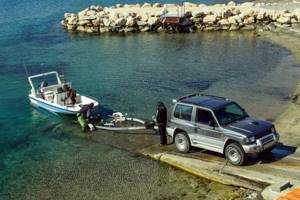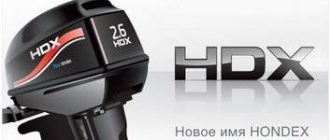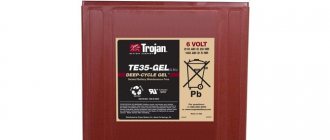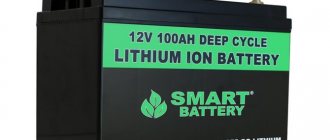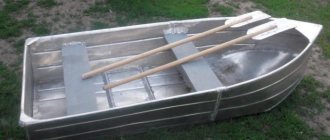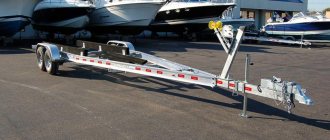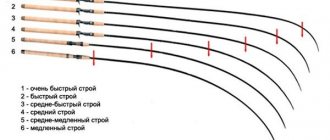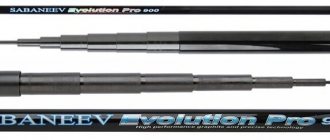Various inflatable and frame boats are quite common among outdoor enthusiasts. They are used for an interesting and useful pastime, for traveling and fishing. To transport such a vehicle to a location, you need to use a special boat trailer. This article provides information about what this device is, what types it comes in and how to use it correctly.
Description of the boat trailer
At the moment, manufacturers offer a wide variety of car trailers, different in type and purpose. Regardless of the type, trailer designs are approximately the same.
Trailer design
Among the main design features of such a transport device as a trailer for an inflatable boat or a boat, it is worth noting the following factors:
- a frame that can withstand all the loads that come from the boat during movement;
- the trailer is made of fairly thick metal, which allows it to hold all the fasteners and rivets when shaking;
- all structural elements are covered with a special anti-corrosion coating;
- To transport large boats, trailers equipped with wheels with load markings are used;
- trailers weighing more than 750 kg are equipped with a special autonomous braking system;
- The trailers have all the necessary light signaling devices - turn signals, brake lights and lights for illuminating license plates;
- To pull the boat out of the water, a regular winch is included.
All these structural elements must be present in trailers, otherwise it will be quite difficult to use the device, and there is also a risk of damage to the boat. If you purchase a trailer from a trusted store and from a reliable supplier, you can count on the device having the correct, well-thought-out design.
Trailer requirements
Along with certain design features, it is important to pay attention to some requirements that the trailer must meet. Here are the most basic of them:
- Exact fit to size . It is very important to pay attention to the suitability of the trailer for water transport. It is necessary to check the weight and dimensions of the boat and only then choose the appropriate vehicle option. This will distribute the load on the trailer as evenly as possible and reduce the pressure on the bottom of the boat.
- Increased strength and reliability . Due to the fact that when unloading a boat, the trailer must be partially driven into the water, this device must be covered with a special anti-corrosion galvanized layer of protection.
- A winch is required . It is necessary for loading and unloading. If the vehicle is purchased from a trusted manufacturer, a winch will be available.
- Due to the fact that the trailer must be immersed in water from time to time, it is necessary to pay attention to the possibility of disconnecting and temporarily removing lighting equipment .
There are also certain additional requirements that ensure maximum convenience and comfort of using the trailer. For example, the presence of a cradle with keel rollers will significantly reduce bottom friction.
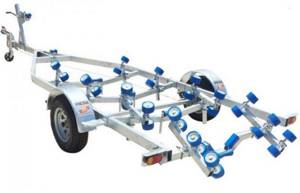
Rules for transporting a boat trailer
Speaking about the rules for transporting boat trailers, first of all it is necessary to note the permitted speed limits. On highways the speed should not exceed 90 km/h; on other categories of roads it should not exceed 70 km/h.
In the dark, as well as in conditions of difficult visibility and in tunnels, the following lighting devices must be installed and turned on on the trailer:
- low and high beam headlights;
- parking lights.
It is equally important to pay attention to the weight of the cargo being transported. It should not be greater than the value set by the manufacturer for this car.
This is interesting: Rules and requirements for the transportation of goods by road in 2021
Before driving a vehicle with a trailer, the driver must check the placement, securing and general condition of the load to prevent it from falling and not interfering with movement.
Transporting boats using a device such as a trailer is only permitted under certain conditions:
- Absence of factors that impair the driver's visibility.
- The load does not interfere with the control and stability of the car.
- Fully exposed lighting fixtures and markings.
- The trailer should not create noise, generate dust or pollute the road.
If the placed cargo, in this case a boat, does not meet the specified requirements, the driver must take certain measures to correct the problem. Until the errors are corrected, operation of the cargo, that is, transportation of the boat, is prohibited.
Violation of the established rules for the carriage of goods and transportation of water transport automatically entails a warning, as well as the imposition of an administrative fine.
Methods of transporting a PVC inflatable boat
The second question that faces the owners of this transport is how to transport the boat and move it from place to place on land. In the case of a rowing boat, which is so compact and fits into a backpack, additional means of transportation are not needed. The advantage is that it can be moved and inflated in nature without the help of anyone. But lovers of water recreation do not always want to do this; most of them prefer to bring a ready-made boat and launch it. There are a number of methods for transportation.
On a trailer with sides.
A regular flatbed trailer is the most common type of vehicle that can be found among many motorists. Moving an inflatable boat with its help is not the best option, as it has a number of disadvantages that are worth paying attention to: the folding sides have sharp corners, the trailer itself is riddled with protruding bolt heads, which threatens the transportation of the craft, making it impossible due to damage to the cylinders and bottom . The way out of this situation is to technically improve the trailer - purchase a special bedding that will help hide sharp edges. After these modifications, transportation of the watercraft will become safe. At the same time, so that the watercraft does not fray and holds tightly, it is necessary to provide slings that will secure it and make transportation also reliable. In this case, transportation is possible with the keel down and the keel up. The motor (if equipped) is transported separately.
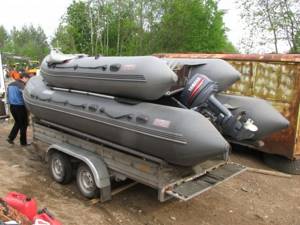
On a boat trailer.
Mandatory components of this trailer are a winch, guides and light signaling. The inflatable boat on this trailer is transported with the keel down. At the same time, the motor of the watercraft is removed from the transom and transported either in the cabin of the car or inside the boat, with measures taken in advance to protect the cylinders from engine parts. If the option of removing the motor is not suitable, you should secure it tightly with belts so that it does not fall off. In this case, it must be in a lowered state.
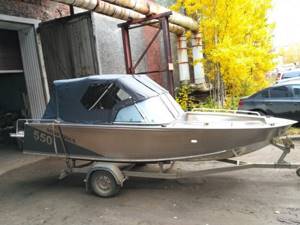
On homemade structures.
This moving option has a number of advantages over the previous ones: individual sizes and price. When making a trailer with your own hands, remember that all sharp edges must be protected.
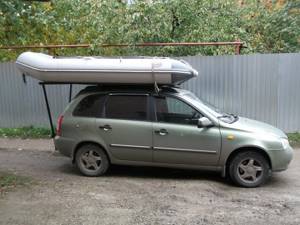
Contact platforms.
The working surface of this platform is leveled and has no sides. The role of fasteners is played by wide belts. The choice of platform is influenced by the size of the boat.
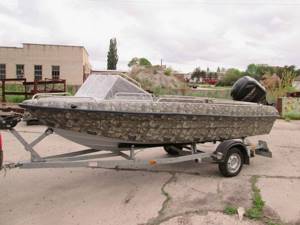
If a trailer of one type or another is not available and there is no opportunity to purchase one, there is another way to transport the watercraft: moving it on the roof of a car. To transport this method, a permanently installed rack and cross members are required. In this case, the floating device is placed bottom up and secured with straps. The disadvantage of this method is the likelihood of damage to the car or boat if the latter is not secured correctly. Therefore, each owner decides for himself how to transport a PVC boat.
Additional devices are an integral part of the process of moving an inflatable boat on land
Types of trailers
Modern boat trailers are divided into several categories - according to the number of axles and the presence of a braking system. In addition, there are special universal devices. Each of them is worth studying in more detail, familiarizing yourself with the advantages and features of all types of modern trailers in order to make the selection process easier for yourself.
By number of axes
Based on the total number of axles, boat trailers can be divided into single-axle and double-axle. The first ones are used for transporting boats and boats whose weight does not exceed one and a half tons and 6 meters in length. As for biaxial trailers, they are most often used for boats. These are already more massive devices with which you can transport watercraft, the weight of which reaches 2.5 tons and a length of up to 8 m. The presence of two axles significantly reduces the pressure on each of them, and the process of moving the trailer itself will be smooth and as stable as possible.
Special three-axle trailers are especially popular. These structures can be used to transport fairly large boats, the weight of which ranges from 3 to 9 tons.

The advantageous feature of these models is optimal stability when moving at a fairly high speed.
Braked and non-braked
Brake trailers have a total weight of up to 750 kg. These means are distinguished by the presence of a brake roll, a special mobile wheel drive and winches with a special level of lifting capacity.
Thanks to the braking system, the movement of the trailer is quite smooth, and the presence of a mobile move allows you to distribute the center of gravity of the boat or boat that is on the device as efficiently as possible. Devices that are characterized as brakeless have a relatively small size, their weight does not exceed 750 kg, and their length fluctuates around 3 - 5 meters. The suspension in such devices can be spring or harness. The second option is more durable and durable.
Universal and specialized
Specialized trailers differ from universal ones in that they are designed exclusively for boats. Universal ones are used to move yachts, ATVs and boats. If you purchase a vehicle from a reliable manufacturer, you can be sure that your water transport will reach its destination safe and sound.
The advantage of universal devices is the ability to use them not only for transporting cargo, but also for other devices. In addition, any trailer model can effectively interact with different brands of cars.
To transport an inflatable vehicle, it is advisable to purchase a specialized trailer for transporting a boat; for a hull boat, a universal one is suitable.
Trailers for boats and yachts
- home
- Trailers for boats and yachts
- Sort by:
- Default
- Price
- Name
MZSA 81771D.101 Trailer for boats, large jet skis and small boats.
- Maximum vessel length 430 cm
- Cradle length 215 cm
MZSA 81771E.101 Trailer for boats and boats.
- Maximum vessel length 475 cm
- Cradle length 265 cm
MZSA 81771D.103 Trailer for boats, large jet skis and small boats.
- Maximum vessel length 430 cm
- Roller supports (provide convenient lowering/ascent) of the vessel
MZSA 81771E.103 Trailer for boats and boats.
- Maximum vessel length 475 cm
- Roller supports (provide convenient lowering/ascent) of the vessel
MZSA 81771G.011 Trailer for boats and boats.
- Maximum vessel length 475 cm
- Cradle length 215 cm
MZSA 81771G.013 Trailer for boats and boats.
- Maximum vessel length 475 cm
- Roller supports (provide convenient lowering/ascent) of the vessel
MZSA 81771G.021 Trailer for boats and boats.
- Maximum vessel length 545 cm
- Cradle length 265 cm
MZSA 81771G.023 Trailer for boats and boats.
- Maximum vessel length 545 cm
- Roller supports (provide convenient lowering/ascent) of the vessel
MZSA 81773G.011 Trailer for boats and boats.
- Maximum vessel length 475 cm
- Cradle length 215 cm
MZSA 81773G.013 Trailer for boats and boats.
- Maximum vessel length 475 cm
- Roller supports (provide convenient lowering/ascent) of the vessel
MZSA 81773G.021 Trailer for boats and boats.
- Maximum vessel length 545 cm
- Cradle length 265 cm
MZSA 81773G.023 Trailer for boats and boats.
- Maximum vessel length 545 cm
- Roller supports (provide convenient lowering/ascent) of the vessel
MZSA 821121.202 (ex. 832321.007) Trailer for boats and boats, equipped with a brake system
- Maximum vessel length 520 cm
- Gross weight 1300kg
- Rubber harness suspension
MZSA 821131.201 Trailer for boats and boats, equipped with a braking system
- Maximum vessel length 570 cm
- Gross weight 1300kg
- Spring suspension
MZSA 821131.202 (ex. 832321.004) Trailer for boats and boats, equipped with a braking system
- Maximum vessel length 570 cm
- Gross weight 1500kg
- Rubber harness suspension
MZSA 821131.302 (ex. 832321.006) Single-axle trailer for boats and boats, equipped with a braking system
- Maximum vessel length 570 cm
- Gross weight 1800kg
- Rubber harness suspension
MZSA 822131.402 (ex. 821711.056) Two-axle trailer for boats and boats, equipped with a brake system
- Maximum vessel length 520 cm
- Gross weight 1800kg
- Rubber harness suspension
MZSA 822131.602 (ex. 821711.054) Trailer for transporting boats and yachts. The maximum length of the vessel is 6.2 m. Load capacity is 1900 kg. Rubber harness suspension. Equipped with a braking system. Two axes.
MZSA 822141.402 (ex. 821711.042) Two-axle trailer for yachts and boats, equipped with a braking system
- Maximum vessel length 720 cm
- Gross weight 2500kg
- Rubber harness suspension
MZSA 822141.502 (ex. 821712.005) Two-axle trailer for yachts and boats, equipped with a braking system
- Maximum vessel length 720 cm
- Gross weight 3000kg
- Rubber harness suspension
MZSA 822141.602 (ex. 821712.002) Two-axle trailer for yachts and boats, equipped with a braking system
- Maximum vessel length 720 cm
- Gross weight 3500kg
- Rubber harness suspension
MZSA 822151.402 (ex. 821711.061) Two-axle trailer for yachts and boats, equipped with a braking system
- Maximum vessel length 820 cm
- Gross weight 3500kg
- Rubber harness suspension
MZSA 823111.102 (ex. 821710.002) Three-axle trailer for yachts and boats, equipped with a braking system
- Maximum vessel length 820 cm
- Gross weight 3500kg
- Rubber harness suspension
When buying a trailer for a boat, in addition to the general requirements for a trailer, be guided by the following recommendations:
- Don't buy a trailer that is too small. The total length of the boat with motor determines the length of the road train for you, regardless of the choice of trailer. If you choose a trailer that is too small, the boat will hang too much beyond the cradle, which will not reduce the overall length of the road train. The full length of the boat with the motor should not protrude beyond the trailer by more than 1 m (this is not safe and is prohibited by traffic regulations), and the bow of the boat should be located at least 0.8-1 meters from the car for the normal ability of the road train to turn.
- The wheel travel (trailer axle) should not be welded to the frame, but adjustable, i.e. it can be moved closer to the front or rear of the trailer. After the first loading of the boat with the motor onto the trailer, it is necessary to adjust the location of the axle so as to create a load on the tow bar of about 30 kg (no more than 40 kg, but in no case a negative load). Otherwise, the road train will be poorly controlled (the trailer will “wiggle” behind the car), which will lead to an accident with tragic consequences.
- To secure the boat to the trailer, use 2-3 tie-down straps. To do this, the trailer must have cargo securing loops, preferably movable ones to select a reliable and convenient mounting location.
- The trailer must be equipped with reliable support brackets or roller supports. The brackets must be secured to the frame with a stepladder or bolts so that the stepladder or bolts cover the frame from above and below. On cheaper trailers in which this rule is not followed, the cradle may slide down due to shaking while the trailer is moving, and as a result, damage to the keel and loosening of the belts (up to complete). The brackets must be adjustable in height and location on the frame.
- The trailer lights must be removable so that when lowered into the water they do not collect liquid and do not lead to a short circuit (blown fuses and failure of the smart-connect).
- When storing a trailer in a garage, a removable tongue can be useful to save storage space.
MZSA boat trailers meet all these requirements.
The most important parameter when choosing a trailer for a boat is the carrying capacity; you need to take into account the weight of the boat in running order with fuel and the things you plan to put in it. The ideal boat trailer purchase is one with a brake system. Such trailers allow you to legally transport a boat (without overloading the trailer), however, they are more expensive than unbraked ones and in most cases require a BE license. There are also trailers for small boats and boats without a brake system (category B). Such trailers have a small official load capacity (you will face a fine for overloading the trailer), but in fact they have a powerful frame, locking device, axles, springs and wheels designed for heavy loads. Such trailers include trailers MZSA 81771G.021, 81771G.023, 81773G.021, 81773G.023 and their shortened versions MZSA 81771G.011, 81771G.013, 81773G.011, 81773G.013.
You can buy all these trailers for the MZSA boat in our store.
Top
Which trailer to choose?
To purchase a high-quality boat trailer, you will need to choose this device as competently as possible. To do this, you should rely on the following recommendations:
- It is important to take into account the load capacity of the device, since each model is designed for its own individual dimensions.
- Elements such as rollers, cradle, keel rollers are designed for complete safety of the cargo.
- Presence of ground clearance. It must be no less than the same parameter for the car. It is this parameter that is able to ensure maximum stability of the trailer.
- Before purchasing, you need to check the functionality of the light signals, since safety during movement with a trailer directly depends on this.
- It is recommended to give preference to those devices that are equipped with a spring suspension. You need to know that the lever beam and the wheel beam can equally effectively withstand the loads placed on the trailer.
This is interesting: New Subaru Forester 2015 with photo
When choosing the optimal trailer option, you should pay no less close attention to the manufacturer. Here you need to focus on personal preferences or reviews of knowledgeable people.
Advantages of using a trailer
Using a trailer for transportation has a number of advantages:
- The device has special fasteners , keel rollers, lodgements and side rollers that allow you to securely fix the structure.
- The device is able to easily transport heavy loads on uneven roads with holes and potholes due to its spring design.
- A large assortment with different configurations and lengths , allowing you to choose the most optimal option for transporting your watercraft.
- The ground clearance is exactly the same as that of a passenger car.
- Allows you to transport the boat in inflated form , which significantly saves time, without requiring it to be assembled and disassembled.
Trailer registration
Each driver who purchased a trailer must report to a special traffic police unit within five days after making the purchase. In this case, you will need to prepare the following documents:
- owner's passport;
- vehicle passport or design safety certificate;
- a document that confirms ownership, such as a purchase and sale agreement;
- a receipt or check confirming payment of the duties established by law;
- in the process of submitting documents by authorized persons, a power of attorney must be presented;
- legal entities are required, as a supplement, to issue a compulsory motor liability insurance policy and provide a document regarding passing a technical inspection.
Only if you have these documents, registration will be completed and the traffic police will issue individual license plates for the vehicle.
If the weight of the trailer is less than 3.5 tons, individuals do not need to undergo a technical inspection.
Tips for driving a car with a trailer
When transporting boats on special trailers, the watercraft must be carefully secured using a special flat-section elastic cable. Such a device will not damage the PVC material and will avoid backlash typical of temperature changes.
Experts advise using a special canvas cover during transportation. It will help protect the material from various types of mechanical damage that may accidentally occur along the way. Using an awning or cover can prevent damage to the boat from pebbles, twigs or branches.
Tips for driving with a boat trailer
Driving a vehicle with a boat trailer requires:
- completing overtaking at a greater distance from the vehicle being led;
- earlier braking;
- avoiding emergency maneuvers and generally calm driving style;
- calculating the trajectory during sharp turns - especially on boat trailers, due to their large base, the wheels do not always follow the rear track of the car;
- reversing in a confined space, preferably with an assistant;
- the driver implies greater lateral windage when changing the terrain surrounding the road - leaving a dense forest into open windy areas can noticeably sway the trailer;
- regular monitoring at stops of securing the load to the platform, the condition of the coupling head, and the correct installation of the safety chain;
- at least two years of official driving experience, and real experience in driving vehicles with smaller trailers.
The best trailers on the Russian market in terms of price/quality ratio
On the modern market you can find a fairly wide variety of car trailers that can be used to transport boats. In terms of cost/quality ratio, it is worth noting the three most popular models:
- MZSA 81771B.101-05 . An ideal option for transporting not only inflatable boats, but also jet skis. The presence of a moving system allows the weight to be distributed as efficiently as possible, and a high-quality anti-corrosion coating will ensure the durability of the device. The cost of the trailer is 48,500 rubles.
- MZSA 81771C.101-05 . One of the popular models, which is characterized by low cost, lightness of construction, and relatively gentle coating of the cradle. The trailer is stable and equipped with a winch. Price - 43,000 rubles.
- LAV-81015V . This is a specialized model that is intended exclusively for inflatable boats. The lodgements here are wrapped in a special carpet. All installed lighting devices are mounted on one panel, which can be removed if necessary. The cost of the vehicle is 41,000 rubles.
There are a large number of other devices. Drivers will not have any problems with the choice. You can buy a boat trailer to suit a variety of personal preferences.
Self-production of a trailer for transporting boats, boats and scooters
If you wish and if you have certain skills, you can make a boat trailer with your own hands. This is an ideal opportunity not only to save money, but to equip it with various additional elements.
It wouldn't hurt to have a special step on the trailer. This element will allow you to secure the load as conveniently as possible and, if certain difficulties arise, to climb on board the boat. If you install a special longitudinal ladder, this will allow the owner to move around the trailer during loading and unloading.
What methods of transporting PVC boats exist?
Many outdoor enthusiasts wonder how PVC boats should be transported on a trailer? In order to understand this, it is recommended that you read the following information.
A rowing boat, for example, is very convenient to transport from place to place. That is, it is enough to roll it up, place it in a backpack and transport it. That is, no additional devices or means are required for its transportation. You just need to take it out of your backpack and pump it up using a pump.
Although this method is good, it is not suitable for all outdoor enthusiasts. Many fishermen and hunters prefer to transport a ready-made boat. This is convenient because it is easier to launch it into the water without performing any other manipulations.
To transport a watercraft from place to place, you can use several basic methods:
- Using a special boat motor.
- Transportation of a PVC boat on a flatbed trailer.
- Using special contact platforms.
- Using handmade designs.
- On the car itself, that is, on its roof.
Let's look at each of these methods in more detail.
